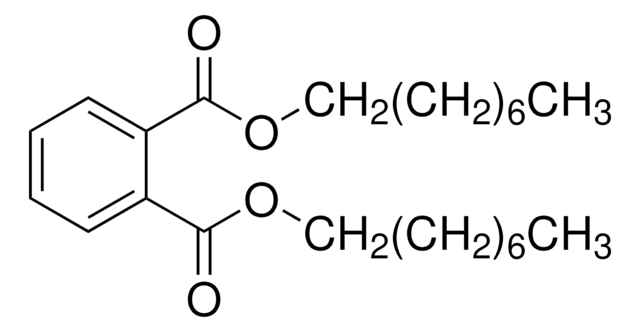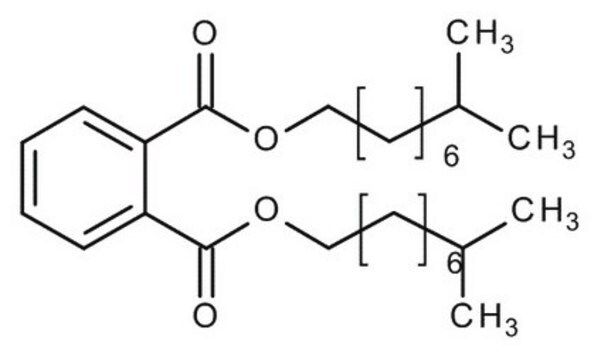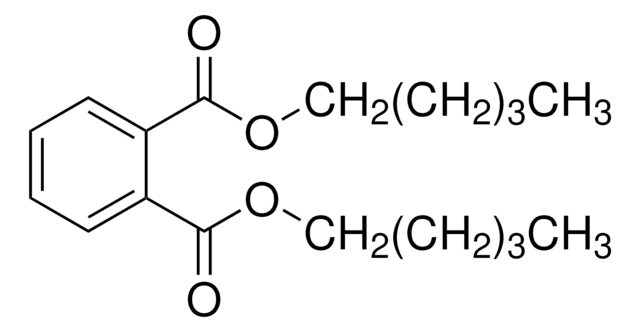Key Documents
80135
Diisodecyl phthalate
Selectophore™, ≥99.0%
About This Item
Polecane produkty
klasa czystości
for ion-selective electrodes
Poziom jakości
linia produktu
Selectophore™
Próba
≥99.0% (sum of isomers, GC)
≥99.0%
Postać
liquid
współczynnik refrakcji
n20/D 1.486
gęstość
0.965 g/mL at 20 °C (lit.)
ciąg SMILES
O=C(OCCCCCCCC(C)C)C1=C(C(OCCCCCCCC(C)C)=O)C=CC=C1
InChI
1S/C28H46O4/c1-23(2)17-11-7-5-9-15-21-31-27(29)25-19-13-14-20-26(25)28(30)32-22-16-10-6-8-12-18-24(3)4/h13-14,19-20,23-24H,5-12,15-18,21-22H2,1-4H3
Klucz InChI
ZVFDTKUVRCTHQE-UHFFFAOYSA-N
Szukasz podobnych produktów? Odwiedź Przewodnik dotyczący porównywania produktów
Powiązane kategorie
Opis ogólny
Zastosowanie
Informacje prawne
Zwroty wskazujące rodzaj zagrożenia
Zwroty wskazujące środki ostrożności
Klasyfikacja zagrożeń
Aquatic Chronic 4
Kod klasy składowania
10 - Combustible liquids
Klasa zagrożenia wodnego (WGK)
WGK 1
Temperatura zapłonu (°F)
527.0 °F - closed cup
Temperatura zapłonu (°C)
275.00 °C - closed cup
Środki ochrony indywidualnej
Eyeshields, Gloves
Wybierz jedną z najnowszych wersji:
Masz już ten produkt?
Dokumenty związane z niedawno zakupionymi produktami zostały zamieszczone w Bibliotece dokumentów.
Klienci oglądali również te produkty
Nasz zespół naukowców ma doświadczenie we wszystkich obszarach badań, w tym w naukach przyrodniczych, materiałoznawstwie, syntezie chemicznej, chromatografii, analityce i wielu innych dziedzinach.
Skontaktuj się z zespołem ds. pomocy technicznej







